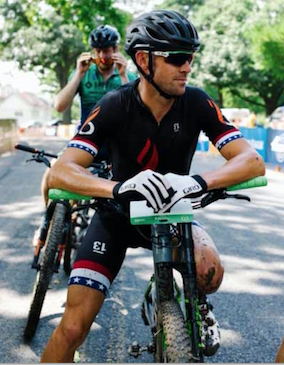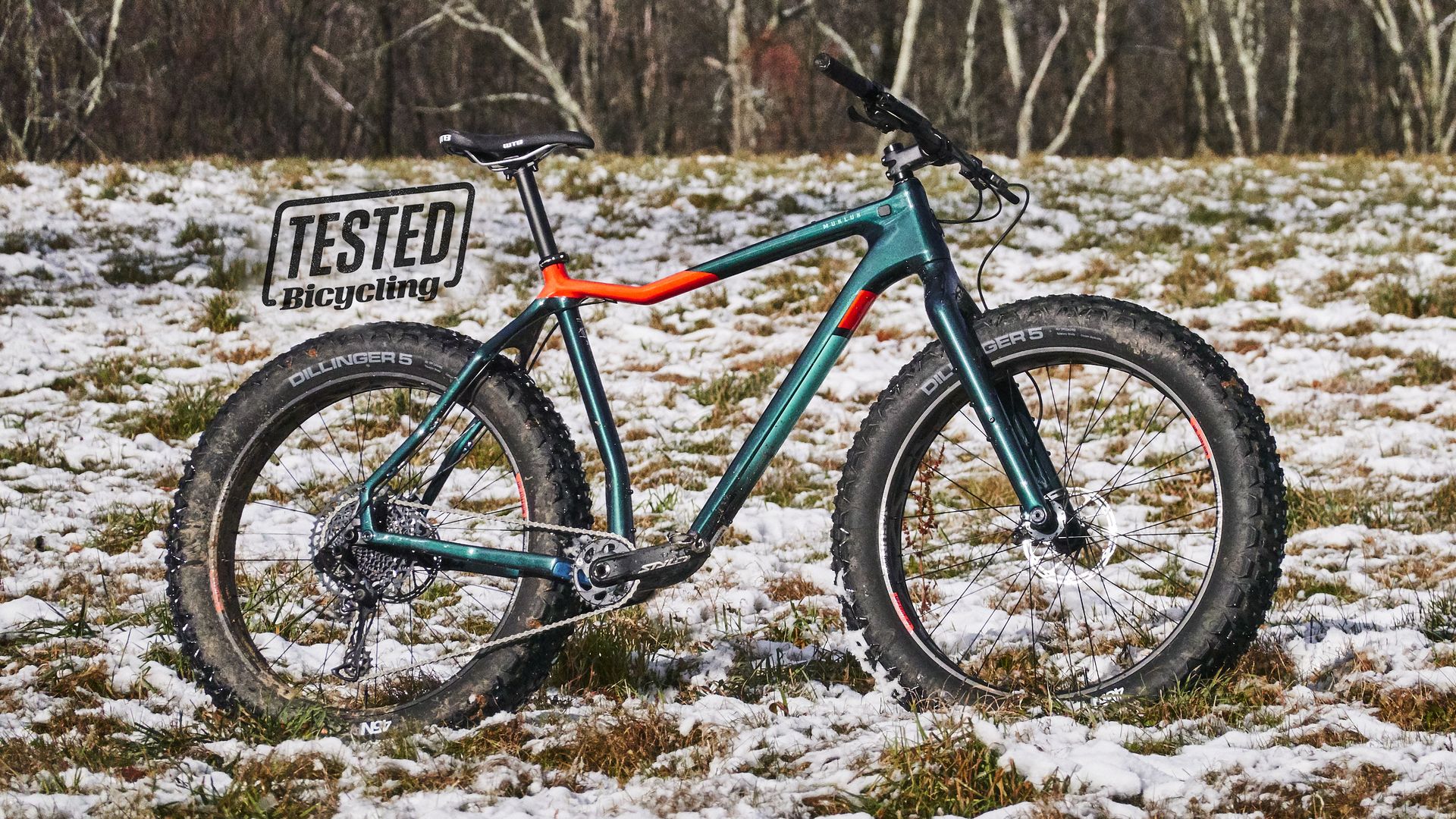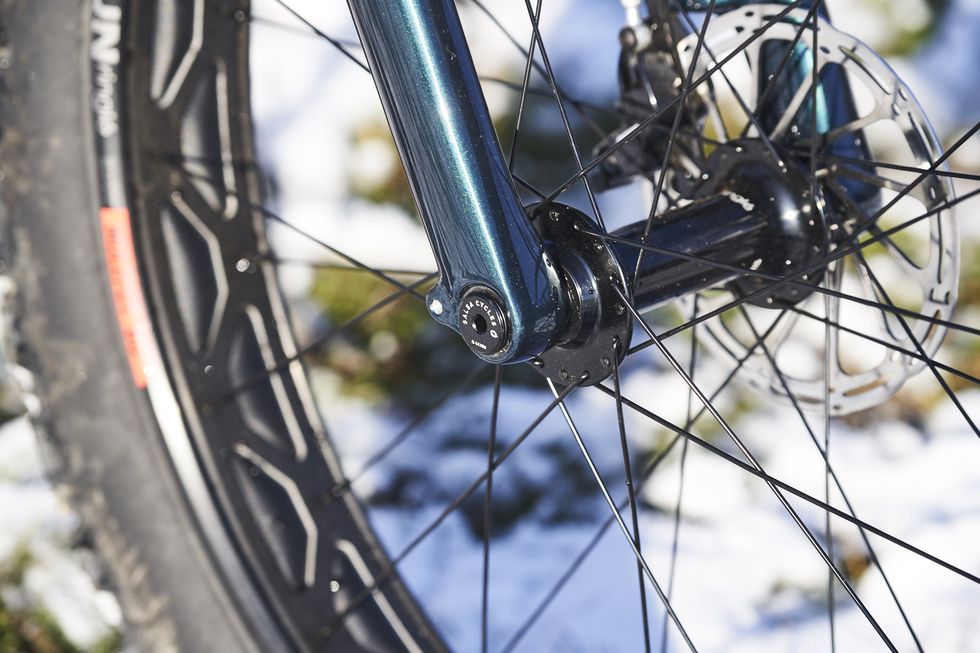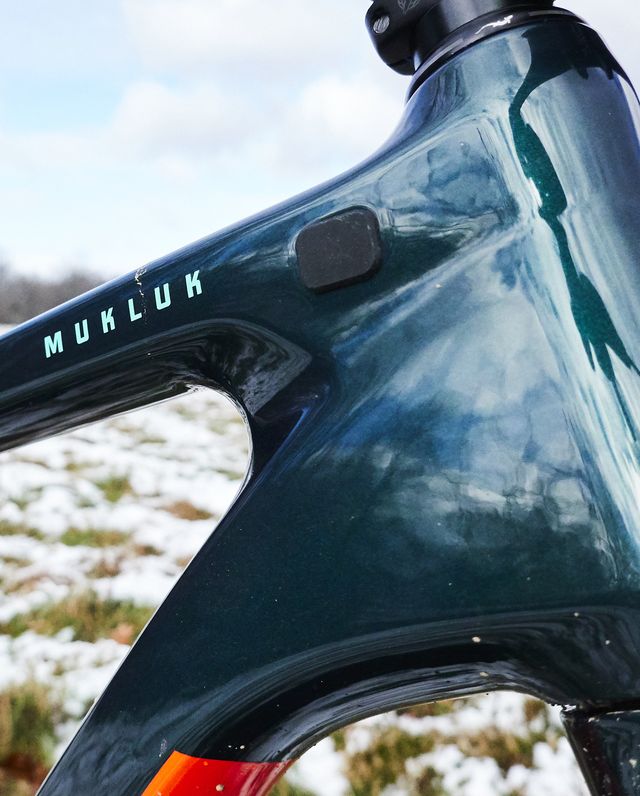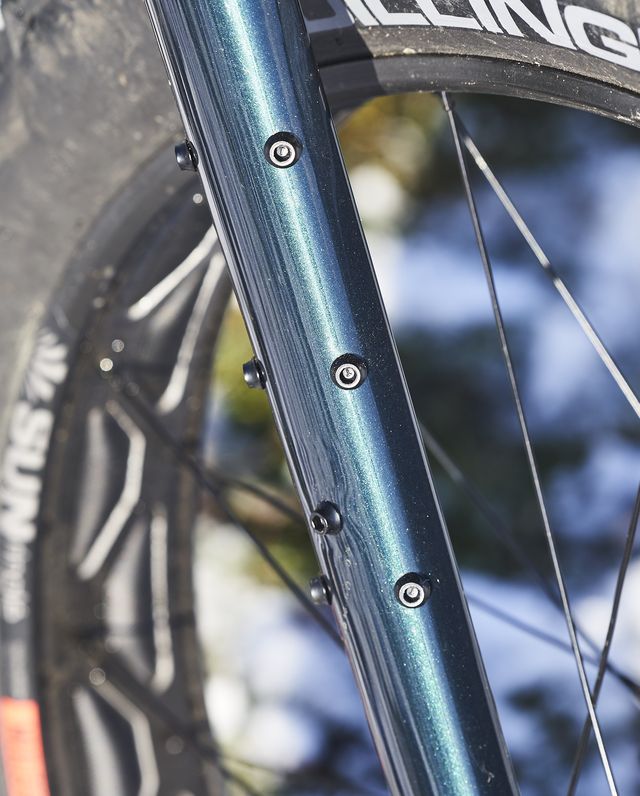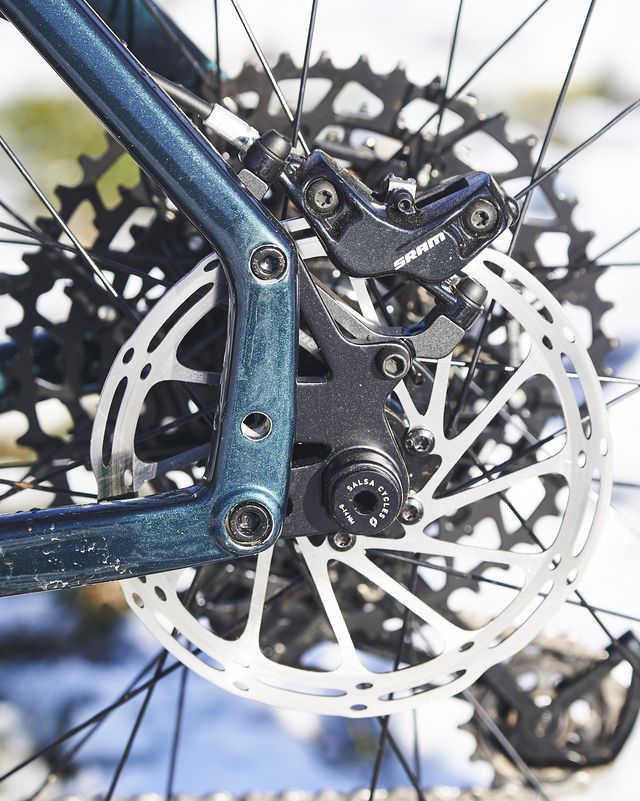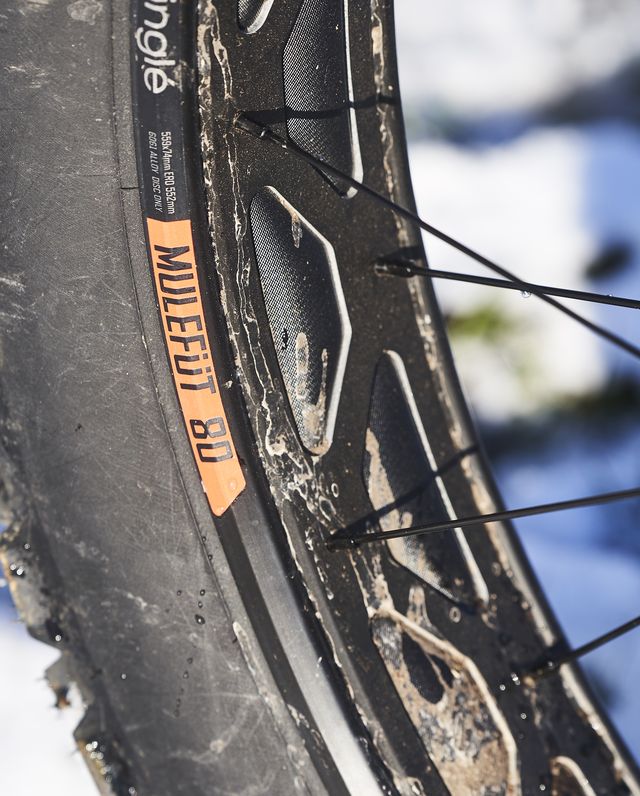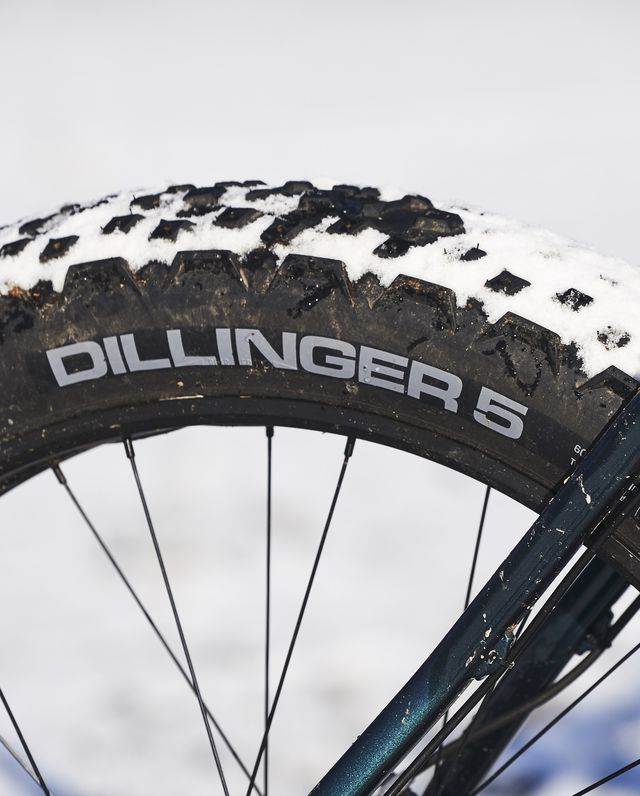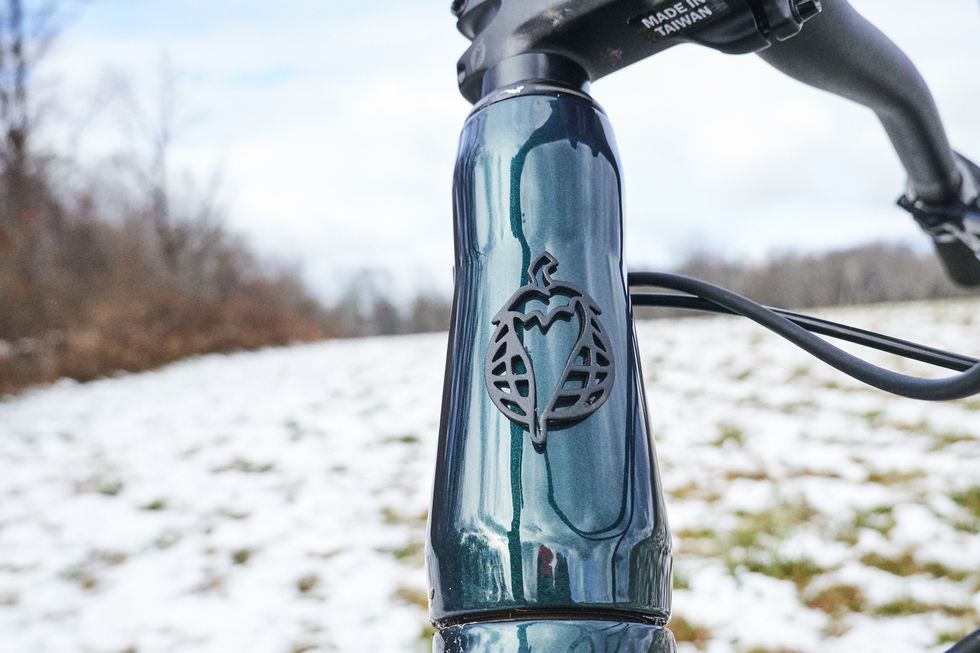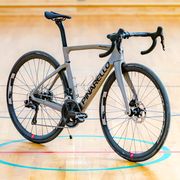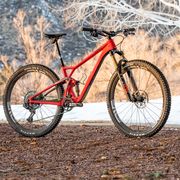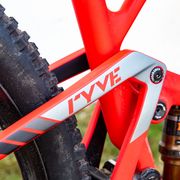The Takeaway: A decade of refinement produces a stable and polished adventure-ready fat bike
• Go-anywhere bike designed for big adventures
• Handles well, even when loaded down
• Fits up to 4.8-inch-wide tires
Price: $3,149
Weight: 28.1 lb. (XL)
I had always thought fat bikes were an odd, niche product—great for the intended user but not for me. But a few rides on the Salsa Mukluk changed that. To understand why the Mukluk is so damn awesome for so many riders, you must first understand how it—and all production fat bikes, for that matter—came to be.
Let’s start at the beginning, way back in the late ’80s, not long after the first mountain bikes arrived in shops. As far south as New Mexico and as far north as Alaska, curious riders looking for easier ways to traverse sand and snow started altering frames to accommodate the wider rims and tires they were cobbling together—first by running wheels side by side, then by welding those rims together and cutting apart and sewing back together tires to fit them—all in an effort to create a wider platform on which to roll. Before long, and after much trial and error, the fat bike was born. The first ones were heavy, unwieldy, and slow-rolling, which is pretty much what I expected the Mukluk to be. I couldn’t have been more wrong.
When I pedaled out of my garage on my maiden journey, I didn’t think the 28-pound bike would be as quick and nimble as it was, like I was riding a refined hardtail made for racing. I didn’t expect to stand on the pedals and feel the bike sway back and forth beneath me with a lightness that belied its 4.6-inch tires. And I didn’t let my first log roll, the one where I chickened out, define my ride; instead I tried again and was amazed at how easily the bike cleared the knee-high obstacle. It didn’t take long for me to realize, after maneuvering tight singletrack and navigating wicked rock gardens, that the Mukluk feels like a stable and forgiving mountain bike. For good reason. It’s been in the works for 10 years.
The first complete production Mukluk was available in 2010, which means it’s had a decade of experience—both riding the fat bike boom and surviving the plateau of a maturing market—from which to benefit and grow. That was by design, says product development engineer Peter Koski, who’s been with the Mukluk since its inception. Early fat bikes, including the Mukluk, had long rear centers, steep head angles, and tall head tubes. Over the years, the Mukluk has evolved to become something that doesn’t look too different, on paper, from a standard mountain bike. Its 73-degree seat tube angle and 69-degree head angle wouldn’t be out of place on a cross-country bike.
The Mukluk also has what Salsa calls the Alternator dropout, a removable plate that lets the rider set the rear wheel in two positions: short for hard-packed snow, longer for increased stability in deep snow or sand. And its low standover—thanks to a low bottom bracket and distinctive kink in the top tube—makes dismounts easy.
Frame Mukluk Carbon
Fork Kingpin
Rear Derailleur SRAM NX Eagle
Cassette SRAM Eagle 11-5ot
Chain SRAM NX Eagle
Crankset SRAM Eagle DUB 30t
Shifter SRAM NX Eagle
Brakes SRAM Guide T
Rotors Centerline 160mm
Headset Cane Creek 40
Stem Salsa Guide Trail
Handlebar Salsa Salt Flat 750mm XS-S / Rustler 800mm L-XL
Grips Salsa Fire Tread Lock-On
Seatpost Salsa Guide
Saddle WTB Volt Comp
Wheels SUNringlé Mulefüt
Tires 45Nrth Dillinger, tubeless ready, custom stud-able
With a firm grasp on the Mukluk’s backstory, I was able to appreciate how it could at once cruise along technical trails with ease and be just as adept at bashing off-piste through the underbrush. On paper, I wouldn’t be considered the fat-bike type. I prefer to go fast, and though I like to explore, I generally stay on roads and established trails. But I’m hooked on the Mukluk’s ability to blast through dirt and snow and brush in a way that a mountain bike can’t. Consider me a convert.
